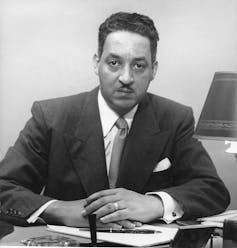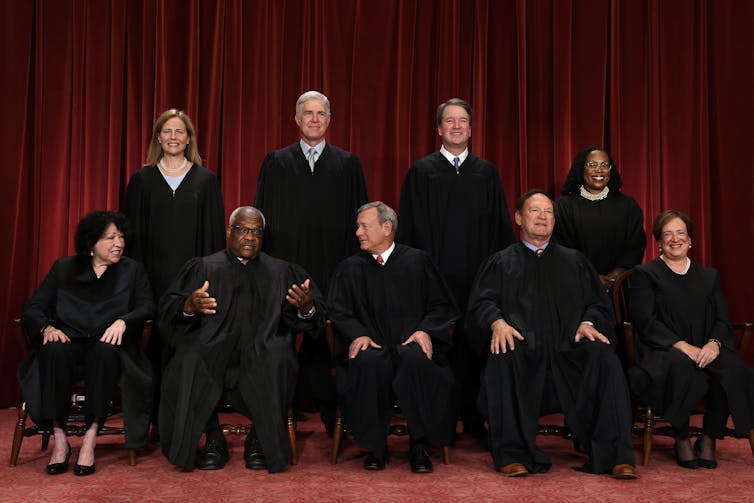Julian Maxwell Hayter

Few people have been more associated with rolling back modern-day civil rights laws than Edward Blum, the former stockbroker who has successfully challenged many affirmative action and voting rights laws.
Blum has no formal legal training. He, in fact, refers to himself as an “amateur litigator.” Yet, he was instrumental in engineering several legal cases that ultimately led to the June 29, 2023, U.S. Supreme Court decision that banned the use of race in college admissions.
Spared from that decision were U.S. military academies. In a brief footnote in the 237-page decision, Chief Justice John Roberts wrote that those institutions have “potentially distinct interests” from other universities and thus made them exempt from the court’s decision banning affirmative action programs.
That exemption – and the U.S. Military Academy at West Point’s use of race in its admissions – are Blum’s latest targets.
On Sept. 19, 2023, Blum filed a suit in the U.S. District Court for the Southern District of New York against West Point over its racial-balancing admission goals.
Given Blum’s strategy of appealing lower court rulings to the nation’s highest court, his latest test case has the potential to once again bring the issue of affirmative action back to the Supreme Court.
In an October 2022 interview, Blum said he believes that diversity on campus is a good thing, but “there is a way to go about doing this without putting a thumb on the scale.”
A political awakening
Until recently, Blum’s legal activism rarely gave rise to widespread public praise, condemnation or even scrutiny. His crusade began in the early 1990s when Blum lost a 1992 congressional election in Texas.
Blum and others eventually sued Texas, claiming that political districts created in 1990 to increase minority voter participation were unconstitutional. The case eventually made its way to the U.S. Supreme Court. In its 1996 decision in Bush v. Vera, the Court agreed with Blum and his fellow litigants. Justices held that race was the dominant factor in the creation of those districts, and thus violated the 14th Amendment’s equal protection clause.
As a result, the court redrew the political boundaries of 13 congressional districts and ordered the state to conduct special elections in those districts they deemed were racially gerrymandered.
“After the Supreme Court opinion came down, my interest in the world of business and investment dramatically declined and my interest in law and public policy dramatically increased,” Blum later told The Washington Post.
But Blum’s subsequent conservative crusade and legal strategies derive from an unlikely source – the National Association for the Advancement of Colored People, known as the NAACP, the very civil rights group that used the courts to dismantle racial segregation in its seminal 1954 case Brown v. Board of Education.
History is not without irony.
The NAACP’s legal legacy
The NAACP was one of the first advocacy organizations to recognize that litigation had the power to change social life.
Long before civil rights activists took to the streets after the Montgomery bus boycott in the 1950s, the NAACP had set its sights on what is now known as institutional reform litigation.
The idea?
During the 1930s and 1940s, the NAACP and its Legal Defense Fund, led by brilliant legal minds like Charles Hamilton Houston and future Supreme Court justice Thurgood Marshall, began to challenge the inherent inequalities of legal segregation by using what became known as test cases.
These test cases targeted racial discrimination in voting, housing and education. They also served a higher purpose in trying to end the system of racist laws known as Jim Crow – the very laws that established segregation across the South and disenfranchised Black voters.

The NAACP also very carefully chose litigants and test cases.
For instance, the lion’s share of the NAACP’s plaintiffs were respected citizens in both Black and white communities. A good number of these cases derived from Southern border states such as Virginia, where racial tensions between white and Black people were less hostile than in deep Southern states such as Mississippi and Alabama.
Using this strategy, the organization filed dozens of test cases against segregation.
Marshall argued 32 cases alone, winning 29 of them.
A new conservative playbook
Blum and his allies are using similar strategies and have been widely successful in achieving their conservative political ideals.
Blum’s strategy against minority voting protections that started in Texas eventually ended in the 2015 Shelby County v. Holder decision.
In Shelby, the Supreme Court, led by Chief Justice John Roberts, gutted the Voting Rights Act of 1965. And they did it by eliminating the requirement that states with a history of racial disenfranchisement needed federal approval when making changes to voting rules.
Blum specifically encouraged Shelby County officials in Alabama to challenge Sections 5 of the Voting Rights Act. That section required Shelby County and certain other Southern jurisdictions to report all proposed voting-related changes to the U.S. Justice Department.
The review process was meant to ensure that the changes would not, as the Justice Department wrote, “deny or abridge the right to vote on account of race, color, or membership in a language minority group.”
From its very start, Southerners fought against the law and spent decades trying to dismantle Section 5, especially because it required direct federal supervision over state and local elections.
That day came with the Shelby County v. Holder decision. Blum’s case helped eliminate a major component of the landmark Voting Rights Act – federal oversight – and has since given rise to partisan gerrymandering in the states previously under federal scrutiny for their legacy of discriminatory voting practices.
By the early 2000s, Blum turned his attention toward affirmative action in higher education. Much like the NAACP during the civil rights era, Blum carefully chose his plaintiffs and test cases.
Blum hand-picked Abigail Fisher, a white woman that his alma mater, the University of Texas Austin, had rejected. Fisher, who was a legacy candidate because her father graduated from there, claimed that she was a victim of reverse discrimination as a result of the school’s affirmative action policies. If successful, the case would have meant the end of race-based admission polices at the Texas school and consequently at other colleges across the country.
The Supreme Court ultimately disagreed in Fisher v. University of Texas at Austin in 2016 and reaffirmed its belief in schools that “train students to appreciate diverse viewpoints, to see one another as more than mere stereotypes, and to develop the capacity to live and work together as equal members of a common community.”
But that didn’t stop Blum.
In new lawsuits against the University of North Carolina and Harvard, Blum strategically featured the plight of Asian Americans, in part because they could be depicted as especially sympathetic victims and model minorities cruelly harmed by affirmative action.
“I needed Asian plaintiffs,” Blum told a group gathered by the Houston Chinese Alliance in 2015.

He found them, and they became the plaintiffs in the cases that led to the Supreme Court decisions in Students for Fair Admissions v. Harvard and Students for Fair Admissions v. University of North Carolina that banned the use of race in college admissions.
Both cases were brought by Students For Fair Admission, an anti-affirmative action group created by Blum.
Blum’s focus on race neutrality often overlooks one very important historical reality – the white backlash that followed the enactment of civil rights laws in the 1960s. In some ways, Blum’s crusade, I believe as a historian of the civil rights movement, embodies that anxiety – and arguably makes a case for why laws protecting minority rights are still needed.
This article is republished from The Conversation under a Creative Commons license. Read the original article.









